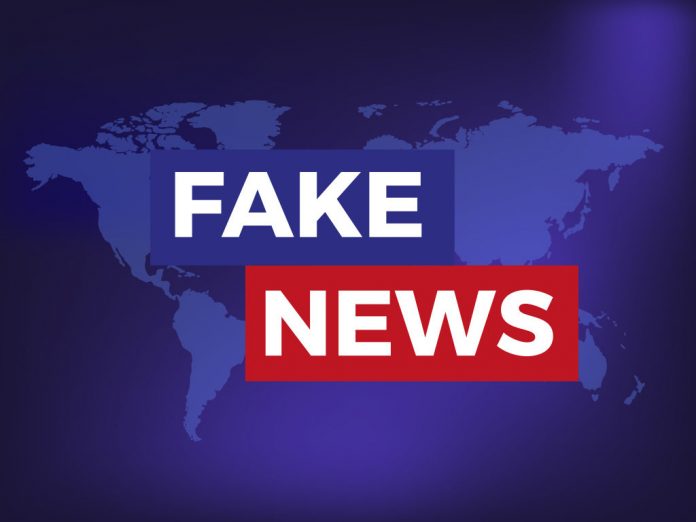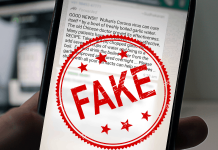This article is written by Pranav Sethi, from SVKM NMIMS School of law, Navi Mumbai. This article analyzes the legal implications of spreading fake news.
Table of Contents
Introduction
Fake news has been around since the development of the printed press but it has begun a different level of popularity in the age of the rise of modern networks. Manipulation of social media and search engine algorithms to reach big audiences and mislead news consumers is becoming a worldwide trend. Fake video clips, news items with modified press identities, bots, and hired commentators for great online status (troll farm) have all become commonplace. The danger of false news is being used by governments to stifle free speech.
At the world level, Snopes, and in India, Social Media Hoax-Slayer and AltNews, are some of the organizations that identify false news. The editor of Postcard News (India) was arrested for propagating lies to incite communal strife. Russia has been accused of using bots and fake news to influence the 2016 US elections; it is a well-documented case of cross-national Internet meddling.
The rise of fake news on Whatsapp, India’s most popular messaging application, has been a critical issue. According to a BBC article, Whatsapp became a “vehicle for misinformation and propaganda,” with both the ruling Bharatiya Janata Party (BJP) and the main opposition Congress Party accused of “disseminating incorrect or misleading material” ahead of the 2019 general election. “A message began circulating in WhatsApp groups across the country following a suicide attack against Indian security personnel in Kashmir in 2019.”
Definition of fake news
In academic areas, fake news has been researched. According to Edson C. Tandoc Jr., Zheng Wei Lim, and Richard Ling, academics have researched false news in six different ways: news satire, news parody, news fabrication, photo manipulation, advertising and public relations, and propaganda. As can be seen, researchers have evaluated a large number of definitions to determine the shared qualities of this phenomenon, and as a result, we do not have a definition as a final product.
Axel Gelfert, in his research, discovered that all available definitions of fake news shared three distinct traits, which he summarised as follows:
- First, there’s the acknowledgement that the internet ( specifically social media) has aided in creating and spreading fake news.
- Second, the link between the information of fake news and the rest of the world is questionable at best.
- Third, the creation and dissemination of fake news are termed “deliberately misleading,” containing “intentionally or knowingly false representations of truth,” “deliberate distribution of misinformation,” and the “intention to deceive.”
In today’s environment, the news serves a variety of objectives. It can take many forms, including facts, opinions, debates, and even amusement in some circumstances. People have utilized it to better comprehend and shape their views and knowledge about the world around them. However, to distinguish between real and fake news, People believe we must limit true news to its central scientific purpose of providing the public with accurate factual information. As a result, we must comprehend what news is in the context of how it has come to be associated with “truth.”
The overall narrative of news is that it is factual, trustworthy, and authentic information conveyed/spread by journalists regarding current happenings in society. In my attempt to describe fake news, I’ll stick to the wide definition of news, which I define as genuine factual information about the world we live in, disseminated by print, broadcast, and social media.
The term “fake” is frequently interchanged with terms like “copy,” “forgery,” “counterfeit,” and “inauthentic.”
“Fake,” according to the Oxford Dictionary, is an adjective that implies “not real; imitation or counterfeit.”As a result, the phrase “fake news” is an oxymoron. From a layperson’s perspective, fake news is news that fails to fulfill the function it was designed to perform, i.e. news that does not represent the truth.
The exploitation of information technology in Indian politics
Political parties are using digital technology and social media networks to distribute false information and erode public trust in the media, government, and academia. It is being done to sway public opinion in their favour.
Artificial intelligence, big data analytics, and “black-box” algorithms are being used to undermine truth and trust, which are the foundation of our democratic society, at a time when consumer habits are digitised. According to a Microsoft poll, India has the worst fake news problem in the world.
According to the analysis, 64 percent of Indians surveyed have come across fake news, compared to 57 per cent globally.
Separate cyber cells and information technology departments have been established by India’s major political parties. They build social networking profiles and transmit information, disinformation, and misinformation material to their supporters in a very organized manner. Various political parties are creating tens of thousands of pages on Facebook and Twitter, and tens of thousands of Whatsapp groups, all with millions of users and members, to influence voters and the public at large. Low-cost internet data has increasingly aided in the growth of online media websites, youtube channels, Facebook pages, and WhatsApp groups.
A big percentage of Indians are uninformed of the fake news factory method that includes the use of this vast number to advance their agenda. This massive online system encourages trolls to create a man-dominated digital area where harassing women on social networking sites is easy. Fake news and internet harassment have targeted well-known journalists, activists, and politicians.
Fake news’ role in the propagation of violence
Millions of fraudulent viral messages and photoshopped images impact crores of individuals every day on one or more issues, either promoting one party or criticizing another. It has broken the nation’s social structure apart and painted a depressing picture of the democratic institution. Investigations into several incidences of mob lynching and violence against tribals, Dalits, minorities, and other marginalized groups have revealed that misleading news is propagated primarily using whatsapp groups. Many people have been attacked or harmed as a result of the hatred that these organized factories of creating misleading messages have instilled in the weaker sections of society.
The vast majority of Indians use WhatsApp, Facebook, and other social media platforms, yet these platforms may become anti-social when rumour opportunists spread false information, resulting in lynching. In May and June 2018, at least 22 people were murdered by mobs in various parts of the country on allegations of being child-lifters or involved in cow slaughter, with the police blaming fake news for the lynchings.
Along with an assessment by Indian Express, which interviewed senior police officials, which found that the numerous WhatsApp viral messages led to the deaths of 27 persons in 15 incidences of lynchings by uncontrollable crowds misled by viral reports of child kidnappers throughout nine states from Assam to Tamil Nadu between mid-2017 and July 2018.
Postcard News, the notorious fake news factory, regularly posts with freedom. Nonetheless, in 2017, Alt News, a misinformation-busting website, documented multiple cases of fake news on this official site.
It was never prosecuted for fabricating news and disseminating false information. Danik Jagran, a renowned Hindi daily, released false news on its website, claiming that the victim girl had not been raped, even though Jagran had been revealed by various fake news buster websites, including The Wire and News Click.
A school bus was attacked in Gurgaon during the Padmavat movie protests in 2017 when the Karni Sena came out on the streets (claiming that the Hindu princess Padmavati’s narrative was altered in the film). Eventually, a message made headlines, revealing the involvement of five Muslims.
Since 2015, lynching has been a big issue in India. It rose to prominence after a Muslim villager from Uttar Pradesh named Akhlaq was killed by a mob when reports spread that he was hiding beef in his freezer. The allegation was broadcast over a loudspeaker from a nearby temple in this case. “Crime and the killings of past months had a common thread, linked to rising nationalist sentiment in the country,” said Mohammad Ali, an Indian journalist.
According to a Reuters article, 63 cow vigilante incidents happened in India between 2010 and 2017. It also happened throughout that time, mainly since the NDA administration took power in 2014. There were 28 Indians killed and 124 injured in these attacks. 24 of the 28 people killed were Muslims. The majority of these occurrences are directly influenced by internet false news messaging and indirectly by the animosity engendered by these communications.
India’s legal position on fake news
In India, there is no explicit legislation dealing with false information. The right to freedom of speech and expression, guaranteed by Article 19(1)(a) of the Indian Constitution, is the fundamental law that encourages the free publication or broadcasting of news. However, it is important to recall that the freedom granted by Article 19(1)(a) is not absolute and is subject to reasonable limitations imposed by Article 19(2).
If you believe you have been the victim of fake news, you can submit a complaint with the following organizations:
- The NBA is an organization that represents private television news and current affairs broadcasters.
- The Broadcasting Content Complaint Council is a body that investigates complaints about broadcasting content (BCCC). The Broadcasting Content Complaint Council can be contacted if you have a complaint about unpleasant television programming or fake news.
- The Indian Broadcast Foundation is a non-profit organization dedicated to broadcasting in India (IBF).
The Information and Broadcasting Ministry overturned its previous rule on fake news in April 2018. “if any journalist was found guilty of disseminating fake news then his accreditation could be cancelled”, according to the directive.
The government then stated that issues with false news should be handled by the Press Council of India, which is also an existing regulating agency. It’s worth noting that the Press Council, under Section 14 of the Press Council Act of 1978, has the authority to, “warn, admonish or censure the newspaper, the news agency, the editor or the journalist or disapprove the conduct of the editor or the journalist if it finds that a newspaper or a news agency has offended against the standards of journalistic ethics or public taste or that an editor or a working journalist has committed any professional misconduct.”
Under Section 79 of the Information Technology Act of 2000 (Exemption from intermediary liability in certain instances), the administration is attempting to give agencies more flexibility.
The first amendment will make it mandatory for online media to use technologies that can detect ‘illegal’ content. On the other hand, the second amendment is more concerning because it entails breaking end-to-end encryption to track the origin of messages. The main issue is that if encryption is breached, authorities may be able to trespass on people’s privacy by using legitimate messages and emails.
Several sections of the Indian Penal Code (IPC), including Sections 153, 153A, 295, and 295A, can be used to combat fake news. Action can be taken against someone who creates or spreads fake news if it can be classified as hate speech under the terms of these clauses.
In the case of misleading news, an alternative legal option is to file a defamation complaint.
If a person believes fake news is defamatory, he or she can initiate a civil or criminal defamation case. As a result, we can observe that there is no specific provision dealing with all sorts of fake news under the IPC.
Analysis of the Anuja Kapur case
Given the frequency with which the coronavirus is spreading over the world, false information is spreading at the same time. During the lockdown, a huge percentage of the human population is trapped inside their homes, where the infodemic is spreading rapidly.
To counteract this, over 400 researchers have debated their efforts to expose false information regarding the virus. Apart from validating and disseminating data, the group also dissects all available data and assists both national and local governments in evidence-based action.
Even news outlets and the press have a greater responsibility to raise awareness and boost education about the dangers of fake news and falsity. Moreover, Anuja Kapur has registered a lawsuit in the Supreme Court, which is now pending and is seeking guidance from the Center on how to set guidelines and establish a legal framework for combating fake news and prosecuting those responsible for making and circulating it.
The petitioner stated that the unending spread of fake news on the internet causes unfathomable atrocities and infringes on citizens’ right to unbiased and truthful news and reports.
Conclusion
In terms of education, India, like Italy, should emphasize cybersecurity, internet literacy, and false news instruction across the board. Individuals should be alert and mindful enough to tell if the news is genuine or not. If a message elicits strong emotions or makes absurd statements, it should be validated before being posted on social media. Any future legislation to combat false news should consider the entire picture rather than blaming the media, as anyone can make and distribute news for personal gain in this age of new media. Highlighting the intended course of action and fake news to re-establish trust in web-based living without compromising web and media opportunities would necessitate state-funded learning, the reinforcement of guidelines, and the effort of tech companies to develop appropriate news curation algorithms. As a result, managing fake news is a complex issue: if it isn’t regulated, it can lead to national and international destabilization; but, if it is regulated too much, it can weaken the democratic system.
References
- https://www.researchgate.net/publication/335789344_Analyzing_the_concept_of_Fake_News_and_the_legal_viability_of_it’s_regulation_in_India
- https://www.google.com/url?sa=t&source=web&rct=j&url=https://www.researchgate.net/publication/343207313_FAKE_NEWS_LEGAL_ANALYSIS_OF_FALSE_AND_MISLEADING_NEWS_AND_CYBER_PROPAGANDA&ved=2ahUKEwjd8oSgks_wAhXH4XMBHWd6A5oQFjABegQIAxAC&usg=AOvVaw2AKoQmlftokH9wLi6RpAEt&cshid=1621200630082
- https://www.loc.gov/law/help/social-media-disinformation/india.php
- http://www.legalserviceindia.com/legal/article-2920-circulation-of-fake-news-and-laws-related-to-it-in-india.html
- https://lexlife.in/2020/05/28/law-regarding-fake-news-in-india/
- https://blog.ipleaders.in/government-response-fake-news/
- http://lawtimesjournal.in/fake-news-and-its-legal-consequences-amidst-the-pandemic-in-india/
- https://www.google.com/url?sa=t&source=web&rct=j&url=https://www.drishtiias.com/pdf/1584990847-the-problem-of-fake-news-in-india-issues-concerns-and-regulation.pdf&ved=2ahUKEwi4ro7u-dDwAhXDH7cAHQxbC4UQFjACegQICxAC&usg=AOvVaw1xq3F6eruYAaZjd7HHHAVx
- https://www.academia.edu/resource/work/43709309
- https://www.academia.edu/resource/work/41657890
LawSikho has created a telegram group for exchanging legal knowledge, referrals, and various opportunities. You can click on this link and join:
 Serato DJ Crack 2025Serato DJ PRO Crack
Serato DJ Crack 2025Serato DJ PRO Crack











 Allow notifications
Allow notifications



